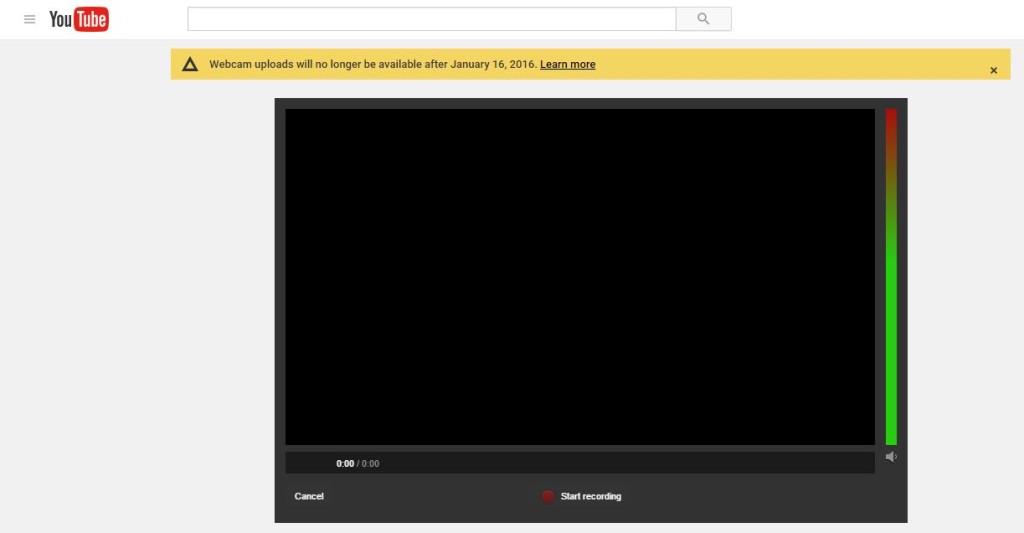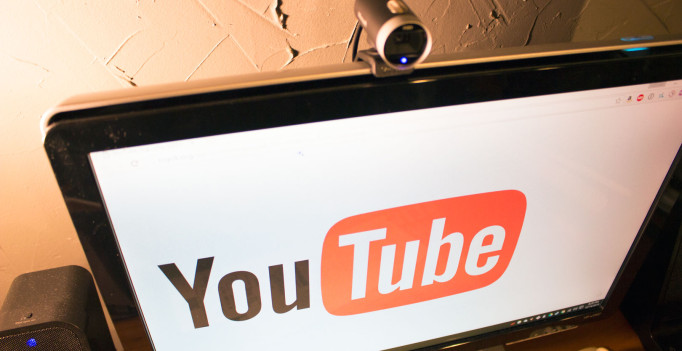Another day, another YouTube feature removed. The popular video streaming service made a low key announcement that users will no longer have access to the webcam capture feature after January 16, 2016 as noted by VentureBeat.
The feature allowed users to capture from their webcam, bypassing a capture program to upload to YouTube directly. Creators will still be able to upload footage from their webcams, but it will have to be captured on a separate program. Channels that are verified and in good standing still keep the option to live stream from a webcam. This is alongside many of the other options available to creators including uploading video files or capturing via a mobile device.

A screenshot of the webcam capture page with the removal notice.
YouTube announced the change on the webcam capture page and an accompanying support document. The post says that the webcam feature will not longer be available “because it is rarely used and is built on technology that is no longer supported”. This would line up with the site’s increased move towards HTML 5 and away from Adobe Flash, which powers the webcam upload feature.
This is a drop in the bucket of the many features YouTube has added in the past year, but also not their first removal either. The company released YouTube Red which allowed viewers to pay $9.99 to remove ads from the service among other features. Experimental features such as virtual reality went live this year, allowing creators to upload 360° video and a redesigned mobile app released over the summer. The service also added a “trending videos” tab to the site and apps in December 2015.
Some of the changes over the years have not been well received. In 2013, YouTube announced that they would be replacing their traditional accounts comments by integrating Google+. This announcement faced blow back in many forms, including comments on the announcement, petitions to revert the changes, and videos about them. Some creators even took to turning comments off entirely. A month before this, the company announced they would be discontinuing their video response feature. This change drew similar backlash from the creator community. Earlier this month their competitor Vessel announced Threads, which have a similar function to video responses.
When contacted for information regarding the change, including how long it had been in the works and why the date of Jan. 16 was picked, CommonGeek received no response.
